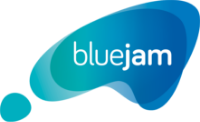Strategic Planning is widely offered as a service for businesses seeking clarity on what they are going to do in the year or years ahead. Historically, Strategic Planning has been tackled as ‘one thing’ – Strategic Planning – but in reality, good strategy is two things: strategic thinking and ‘execution’ planning.
Businesses need Strategy and they need Planning – and they are not interchangeable.
Based on their years of strategy facilitation across the country, the team at Blue Jam has flipped the concept on its side, instead offering Strategy & Accomplishment as a key part of its growth advisory.
Repositioning the Planning element as Accomplishment promotes the importance of monitoring your success along the way and keeping the business accountable. Afterall, this is where the rubber hits the road. You can’t guarantee success or provide concrete proof that it will work until the end user data starts coming in.
Strategy is the theory that specifies the competitive outcome you want to achieve. It’s an outline of how you want to win in your chosen market. The success of your strategy is ultimately decided by your customers, or clients, or consumers.
Do they consistently choose you?
The Plan that falls out of defining the overarching Strategy refers to the activities you identify for your business over time – it could be increasing production capacity or doubling the size of the team. Planning is on the resource allocation and cost side of the business, and it is within your control.
To be sure, businesses need a plan to help prioritise and allocate resources. Plans are there to clearly define objectives and map out the pathway on how to pursue business goals.
Plans are also used to help build a budget and inform financial needs. Importantly, plans provide the framework to ensure ‘management by measurement’ and better manage the business.
Strategy, however, is not a plan, strategy is a set of integrated choices to win. The Strategy element is about making choices:
- Choices about your aspirations, purpose and vision;
- Choices about what you are going to offer to whom;
- Choices that set apart your offer from your competitors, either through cost leadership/advantage or differentiation;
- Choices that are attainable – this means you make choices about the capabilities and systems that will deliver on the value you are offering.
A growth strategy is about the customer saying “YES”. A growth strategy is about having a competitive advantage which means … “deliberately choosing a different set of activities to deliver unique value,” says Michael E. Porter, the Bishop William Lawrence University Professor at Harvard Business School, and a globally respected writer on business strategy.
To find out more about Strategy & Accomplishment and the Blue Jam growth advisory, and to meet our facilitators, Simon Starr and Martin Pike, drop a line to hello@bluejam.com.au or ring us on 1300 190 380.



 How are you going to win in the market in 2024?
How are you going to win in the market in 2024?
 Recruitment is a key to supporting business growth
Recruitment is a key to supporting business growth